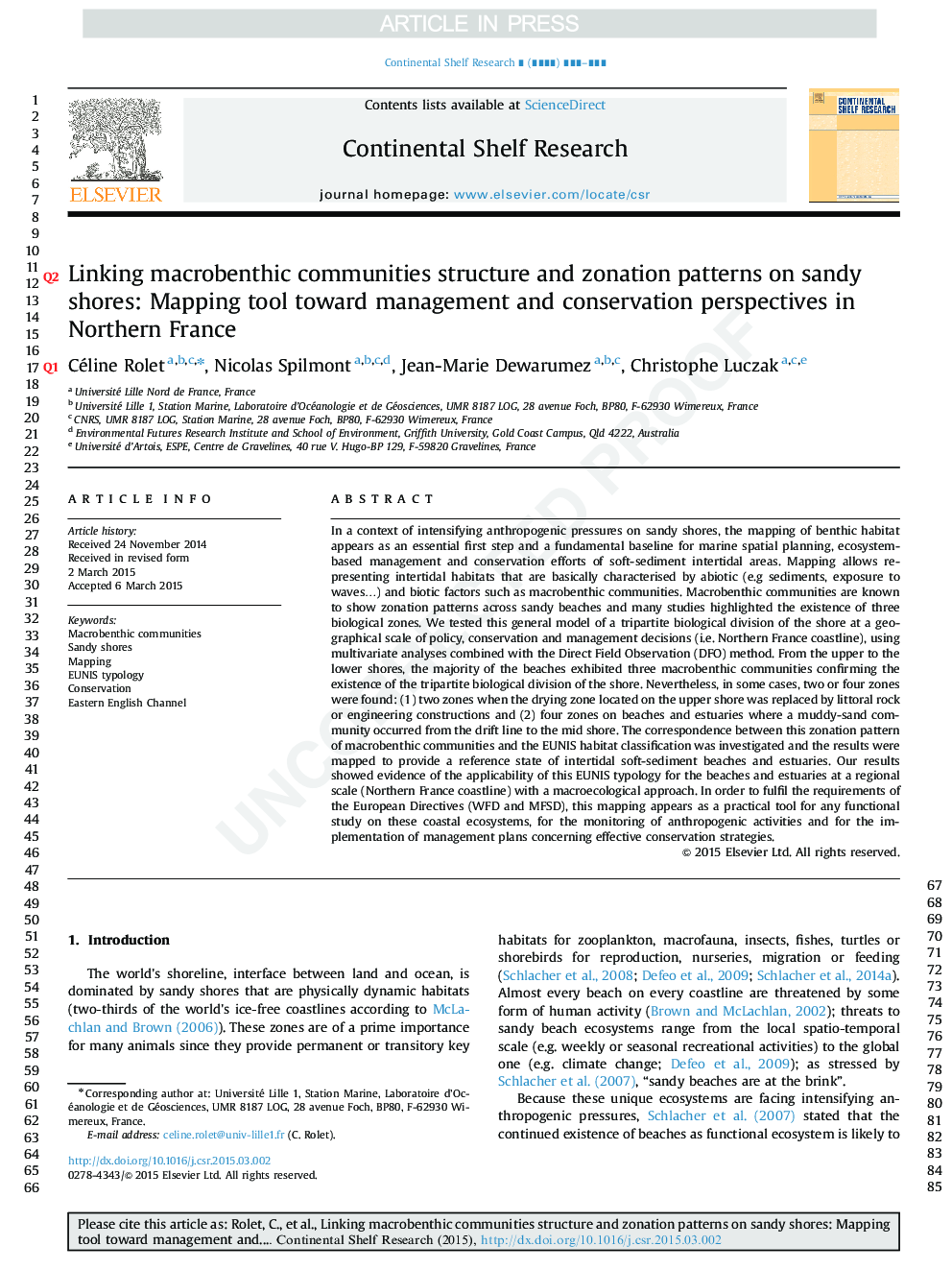| Article ID | Journal | Published Year | Pages | File Type |
|---|---|---|---|---|
| 6383151 | Continental Shelf Research | 2015 | 14 Pages |
Abstract
In a context of intensifying anthropogenic pressures on sandy shores, the mapping of benthic habitat appears as an essential first step and a fundamental baseline for marine spatial planning, ecosystem-based management and conservation efforts of soft-sediment intertidal areas. Mapping allows representing intertidal habitats that are basically characterised by abiotic (e.g sediments, exposure to wavesâ¦) and biotic factors such as macrobenthic communities. Macrobenthic communities are known to show zonation patterns across sandy beaches and many studies highlighted the existence of three biological zones. We tested this general model of a tripartite biological division of the shore at a geographical scale of policy, conservation and management decisions (i.e. Northern France coastline), using multivariate analyses combined with the Direct Field Observation (DFO) method. From the upper to the lower shores, the majority of the beaches exhibited three macrobenthic communities confirming the existence of the tripartite biological division of the shore. Nevertheless, in some cases, two or four zones were found: (1) two zones when the drying zone located on the upper shore was replaced by littoral rock or engineering constructions and (2) four zones on beaches and estuaries where a muddy-sand community occurred from the drift line to the mid shore. The correspondence between this zonation pattern of macrobenthic communities and the EUNIS habitat classification was investigated and the results were mapped to provide a reference state of intertidal soft-sediment beaches and estuaries. Our results showed evidence of the applicability of this EUNIS typology for the beaches and estuaries at a regional scale (Northern France coastline) with a macroecological approach. In order to fulfil the requirements of the European Directives (WFD and MFSD), this mapping appears as a practical tool for any functional study on these coastal ecosystems, for the monitoring of anthropogenic activities and for the implementation of management plans concerning effective conservation strategies.
Related Topics
Physical Sciences and Engineering
Earth and Planetary Sciences
Geology
Authors
Céline Rolet, Nicolas Spilmont, Jean-Marie Dewarumez, Christophe Luczak,
